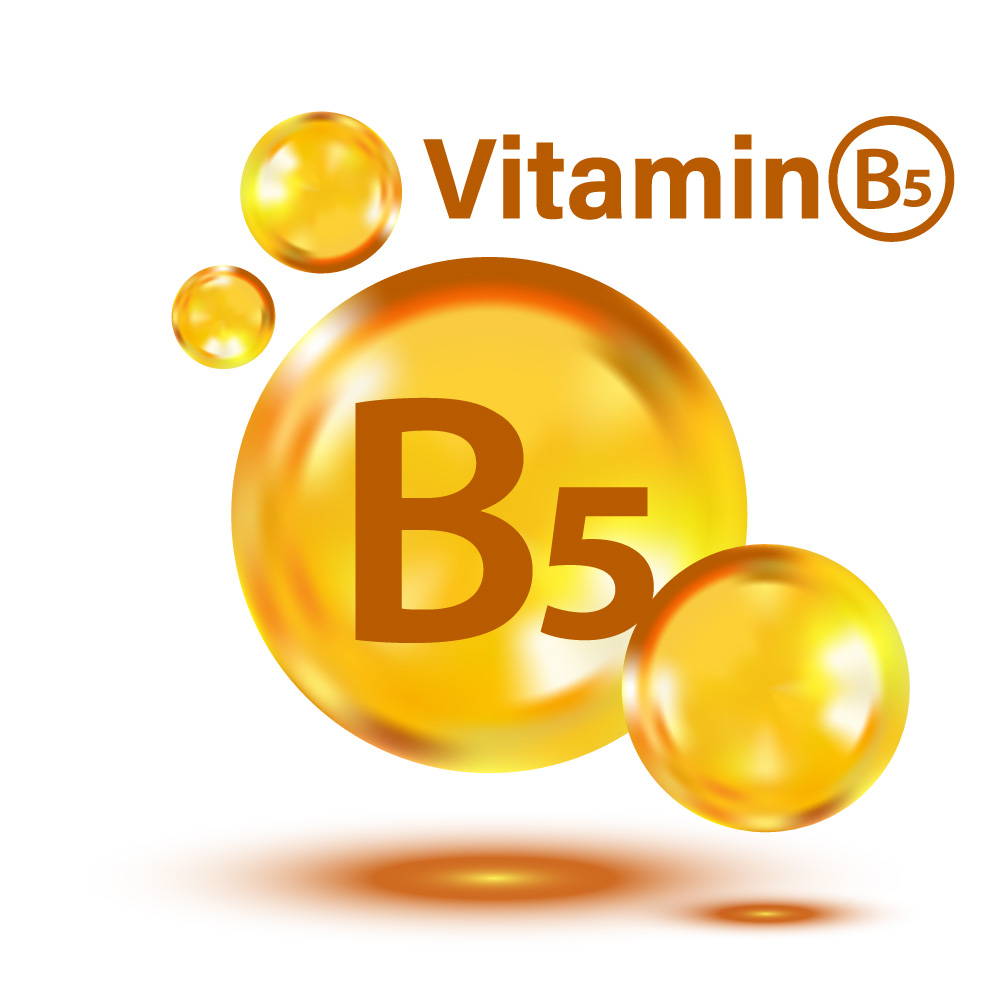SUPPLEMENT - VITAMIN
Explore our effective micro-nutrients and premium ingredients

What is Pantothenic acid and what does it do?
How much Pantothenic acid do I need?
LifeStage | RecommendedAmount |
Birth to 6 months | 1.7 mg |
Infants 7–12 months | 1.8 mg |
Children 1–3 years | 2 mg |
Children 4–8 years | 3 mg |
Children 9–13 years | 4 mg |
Teens 14–18 years | 5 mg |
Adults 19 years and older | 5 mg |
Pregnant teens and women | 6 mg |
Breastfeeding teens and women | 7 mg |
What happens if I don’t get enough Pantothenic acid?
What are some effects of Pantothenic acid on health?
High cholesterol and triglyceride levels
Can Pantothenic acid be harmful?
Where can I find out more about Pantothenic acid?
References
1. Miller JW, Rucker RB. Pantothenic acid. In: Erdman JW, Macdonald IA, Zeisel SH, eds. Present Knowledge in Nutrition. 10th ed. Washington, DC: Wiley-Blackwell; 2012:375-90.
2. Sweetman L. Pantothenic acid. In: Coates PM, Betz JM, Blackman MR, et al., eds. Encyclopedia of Dietary Supplements. 2nd ed. London and New York: Informa Healthcare; 2010:604-11.
3. Institute of Medicine. Food and Nutrition Board. Dietary Reference Intakes: Thiamin, Riboflavin, Niacin, Vitamin B6, Folate, Vitamin B12, Pantothenic Acid, Biotin, and Choline. Washington, DC: National Academy Press; 1998.
4. Trumbo PR. Pantothenic acid. In: Ross AC, Caballero B, Cousins RJ, et al., eds. Modern Nutrition in Health and Disease. 11th ed. Baltimore, MD: Lippincott Williams & Wilkins; 2014:351-7.
5. Health information data from U.S. National Institutes of Health.
Better than others
Nine medical doctors used their research findings to develop Dr’s Grow UP in the biotech lab. The result is a product containing 22 ingredients mixed in the perfect proportions to maximize bone health and height development.
Why Bone Science?
Science-Backed Formulations
Carrying out extensive research and keeping up-to-date with the latest scientific findings is our key to develop superior formulations.
Best Growth Support for Kids & Teenagers
Our products contain essential ingredients for a healthy bone and height development of kids from 10 years and teenagers.
Fighting Aging Effects
We are dedicated to create formulations that delay and restrict the extent of adult’s bone density decrease.
Unmatched Product Quality
Only 100% natural ingredients that contain no soy, no gluten, no GMOs, no maltodextrin, and no artificial flavors, colors, or preservatives.
Product Safety
All of our products are manufactured in the US in an FDA and NSF cGMP registered facility.
